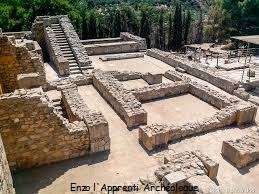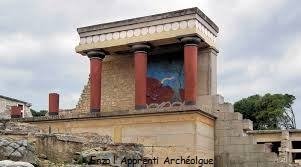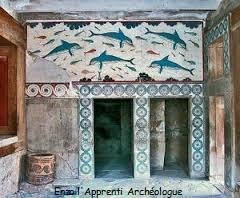Cnossos
Cnossos is the name given to the Greek island located in the North-East of the Mediterranean Sea. This archaeological site is the largest of the Minoan period. About a thousand objects and buildings have been discovered there.
In 1878, the city was discovered by the Cretan Minos Kalakerinos, vestiges had been buried there without anyone ever discovering them; until 1900, when the archaeologist Arthur Evans (during the period when he was in competition with the other archaeologist Heinrich Schliemann) uncovered all the remains of the archaeological site. From this discovery, he fell in love with this city.
On the site, the most famous monuments that remain to this day are the Labyrinth of Daedalus, the Storage Stores and, of course, the Apartments.
The famous legend of the Labyrinth of Daedalus (with the Minotaur) is very similar to reality. It is true that this gigantic monument with a surface area of about 20,000 sq. m. is composed of about 1,300 rooms arranged on five floors and distributed around the "west courtyard" (the largest room in the building) on which large friezes of bulls can still be seen today. With a capacity of nearly 78,000 liters, the 150 pithoï* found in the 18 storage warehouses on site had huge dimensions. They were used to contain several foodstuffs such as oil, wine or cereals.
Pithoï: Name was given to the jars found at the archaeological site of Cnossos, which were used to store food with a long shelf life.
The apartments of Cnossos were very modern for the time (Minoan) because they had latrines with flush cisterns and a system of drainage of wastewater. These apartments were decorated with numerous frescoes on which dolphins were drawn.



Very nice article you have there! But do not forget to cite your sources and credit your images when necessary